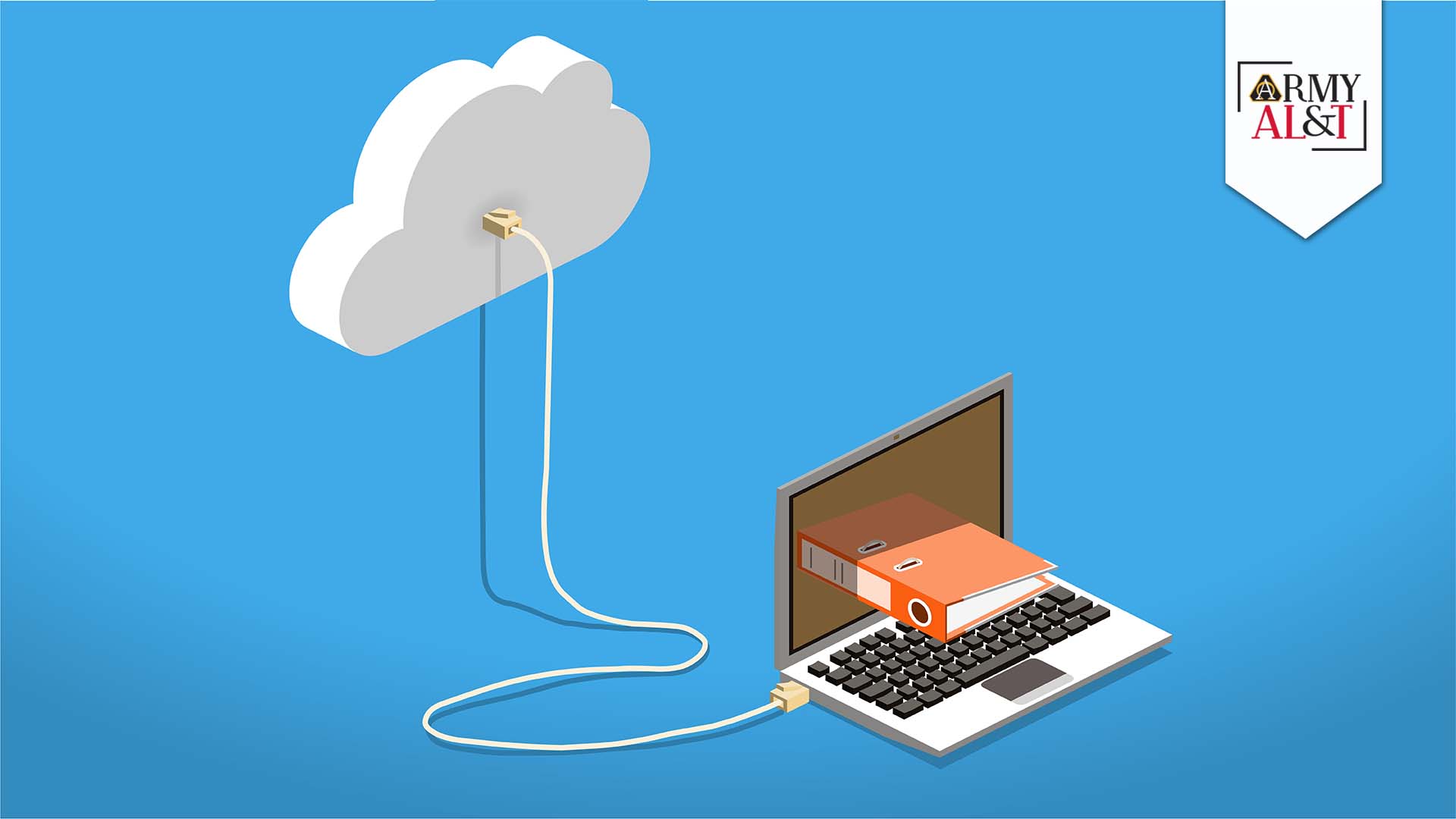
Microsoft Teams allows leaders to check in with their employees in real time and establishes a sense of community among workers. (Image by Getty Images)
From the Director of Acquisition Career Management
Ronald R. Richardson Jr.
Almost three years ago everything changed. Our organizations sent people home to telework full-time for what many thought would be a short-term situation that has since turned into a complete revision in how we do work across the Department of Defense and the U.S. Army.
I’m the type of leader who prefers to lead by walking around. I see value in knowing when and where people are working. I gain a lot of insight from stay-behinds with my colleagues after meetings. I appreciate the head nods and smiles I would get when speaking to a larger group of people. I also think the times of five days a week in the office are behind us, and we’re moving into a new environment of hybrid workplaces and flexibility, and I’m looking forward to it.
RELATIONSHIPS ARE KEY
The relationships established among our workforce before COVID hit were key to our success in those first few months of the transition to full-time telework. We didn’t have all the tools we needed—we attempted conference bridges and virtual meetings but lacked enough VPN ports—but we were all in this together, working for an organization that had an established ethos with people we knew and trusted.
As time went on, people moved on and new people were brought into the organization—new people who have yet to be assigned a cubicle and have never shaken their teammate’s hand. As a leader, I was challenged to figure out how to bring them into the organization and foster those relationships.
That’s where Microsoft Teams comes into play. Microsoft Teams was a game changer. It allowed me to check in on my people, to see them and establish that sense of community. It gave me that face-to-face capability. As Timothy James Keilty and John Z. “Jack” Burke wrote in a recent Army AL&T article: “The chat, group chat and file-sharing functions of Microsoft Teams provide the means to keep the conversation alive in a telework environment. It is how people get real-time updates; more importantly, you keep the entire team in the conversation. It is how you poke your head into someone’s cubicle in a telework environment.”
I’m a big proponent of all Microsoft Teams has brought to our workforce, and how it has enabled us to continue to build and strengthen our relationships.

Younger workers expect a workplace culture that includes telework. (Images by Getty Images)
EMBRACING FLEXIBILITY
Before COVID, telework was seen as a luxury, often times out of reach, for many in our workforce before COVID. Now we’re seeing a discussion around the expansion of remote work and increased flexible work schedules.
DOD and Army senior leaders recognize the tremendous accomplishments that have occurred in this recent full-time telework environment. As we’ve invested in tools like Microsoft Teams and are realizing cost savings from reduced leased space and transportation subsidies, leadership is taking those lessons learned and implementing them into what will look like a hybrid work environment for many.
Within the U.S. Army Acquisition Support Center, we’re re-looking across the organization to determine which positions, based on position description, roles and duties, may lend themselves to remote work. I believe it’s important to do an honest and fair review of the position description to determine if making the position remote makes sense and truly doesn’t require time in the office. For some jobs, like those in a headquarters that require interaction and transactions, remote might not make sense. Whereas fielders and equipment trainers, who travel most of the year, just need to be close to a major airport. Remote work has proven benefits. For example, a two-year study found that U.S. Patent and Trademark Office staff who were allowed to work from home and work from anywhere were 4.4 percent more productive than their in-office counterparts. As a leader, I’m committed to supporting what makes sense for the position and the organization.
Traditional work schedules have also seen a shift. What was clocking in and out of the office each day has blurred as folks “commute” to their kitchen table. Working in the D.C. area, long commutes have always been a challenge. Now, many of my employees are getting that two or three or even more hours back—hours they would have spent in the car, on the Metro or train. They’re starting work earlier or finishing up later. They’re able to be there when their child gets home from school, or easily attend routine medical appointments. Flexible work schedules require managers to focus on measurable and objective performance. Their success is based on clear communication, trust and professional respect.
21st CENTURY LEADERSHIP
It’s time we evolve and have our workplace practices join the 21st century. Workplace cultures that include telework, remote work and flexible work schedules are what the newer generations don’t just look for in a job, but expect.
These workplace benefits will place the DoD and U.S. Army as an employer of choice. Good work-life balance is shown to greatly impact recruitment and retention in addition to improving employee morale. But we need to ensure our leadership practices evolve, too.
Embrace Technology. Telework is here to stay. Leaders must get comfortable with tools like Microsoft Teams. That means establishing reasonable and manageable schedules, and being transparent. Leaders also need to set boundaries and encourage employees to disconnect.
Equal Opportunity. While more employees become remote, leaders need to make sure those same employees remain active participants within the organization. There could be a perception that those in the office have the benefit of additional knowledge, which could lead to lower morale and angst amongst those not in the office. Leaders need to be thoughtful and deliberate in making sure the hybrid workplace remains equitable.
People First. Our top priority must remain protecting and taking care of our people, as it is people who accomplish our mission. While employees are more productive since being able to telework, many are working more outside of traditional office hours and on weekends, putting in longer hours because it’s harder to unplug. As we continue to deal with COVID, leaders should be thoughtful of safety and the mental and physical toll the pandemic has had on many employees. We should continue to check in on each other, leverage wellness programs, and promote community.
We’re transitioning to our new normal, which will require creative thinking and consideration. Success in this new hybrid environment will take a little more deliberate planning, but it will be so worthwhile.







